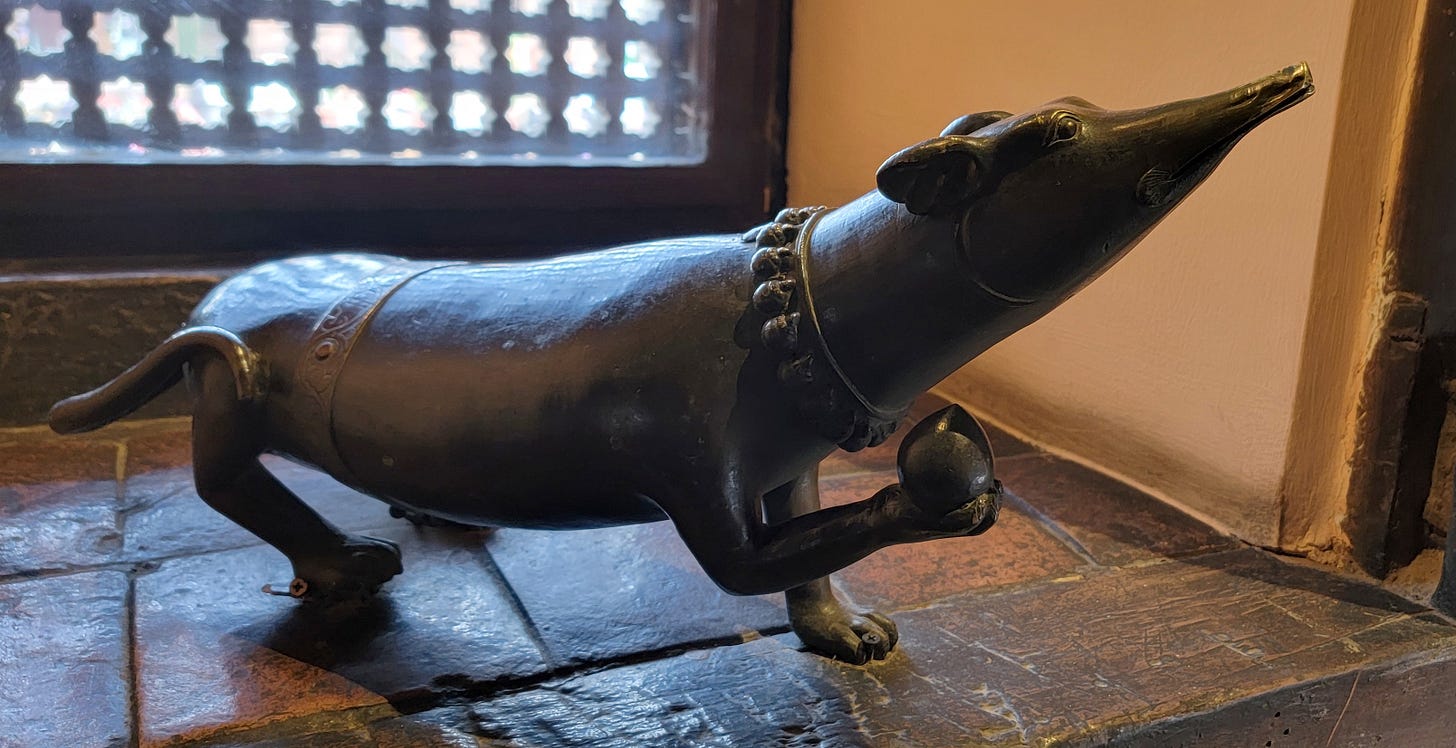The label of this installation of sculpture fragments at the Patan Museum reads:
Dismembered Deities: 102 Arms, Separated from the Struts of the Harishankara and Char Narayana Temples
The early, 8th-13th-century struts supporting the eaves of temples and monastic quadrangles were carved from a single timber. The hands of elegant two-armed tree spirits were rarely holding an object. This tradition changed fundamentally around the middle of the 16th century, when the deities of the struts were equipped with up to sixteen arms. The hands hold a variety of attributes which allow the identification of the deity of the strut. The example presented above from the neighboring main courtyard of the palace presents one of the terrifying manifestations of Shiva, Krodha Bhairava, riding on the sun-bird Garuda. The fourteen attributes are associated not only with Bhairava, but also Indra and Shiva.
Of the originally 286 arms of the struts of the Harishankara temple, only six are preserved at the lower roof, fixed by iron nails to the bodies of deities. Of the 62 arms of the Char Narayana (Four Manifestation of Vishnu) temple six are preserved in its original position.
From the rubble of the two collapsed temples 162 arms were salvaged. The process of disappearance began, however, in the 19th century. Hands were often damaged and their attributes lost. Today, it is impossible to assign the preserved arms to a specific strut and to design the missing ones. Therefore, all 100 struts are re-installed as salvaged from the rubble. To demonstrate the variety of the dismembered arms, a selection of 102 is displayed within a square frame.
Say what you will about monotheism, it does hedge against iconological arm inflation. An arms race, if you will.
The Patan Museum also holds a gorgeous 18th-century bronze Maitreya.
Then there were these guys.
So far none of the images in this case can be identified with any certainty as to exact origin or date. It is probable that all these images were made recently in the Nepalese hill regions by blacksmiths known as Kami, an occupational caste group settled near many hill communities.
These four standing images appear to represent the same unknown deity. All four are crudely cast, wear a multi-pointed crown, and brandish weapons. Their bodies are covered with small lumps and all exhibit a large, flat, shiny navel, perhaps polished in the course of worship.
I’m intrigued by the possibility that a Nepali blacksmith had a private religion and some monk or courtier took an interest in it.
Finally, there was a 19th century bronze rat mount for Ganesha, which amusingly they had installed in an alcove almost on the floor.
He’s holding a laddu, the favorite dessert of Ganesha which coincidentally was one of the treats we ate the other night at Tusa. He looks noble and earnest.
Content at DMJ is free but paid subscribers keep it coming. They also have access to Dissident Muse Salons, discounts in the print shop, and Friend on the Road consultations. Please consider becoming one yourself and thank you for reading.
Our current title in the Asynchronous Studio Book Club is Art in America 1945-1970: Writings from the Age of Abstract Expressionism, Pop Art, and Minimalism by Jed Perl. For more information, see the ASBC homepage.
The current exhibition in the Dissident Museum is David Curcio: The Point of the Needle.












Share this post